Source:- Google.com.pk
Canvas Paintings Biography
Clyfford Still (November 30, 1904 – June 23, 1980) was an American painter, and one of the leading figures of Abstract Expressionism.
Contents [hide]
1 Biography
2 The paintings
3 Education
4 Exhibitions
5 Awards
6 The Clyfford Still Museum
7 Legacy
8 Quotes
8.1 From Still
8.2 From others
9 Notes
10 References
11 Further reading
12 External links
[edit]Biography
Clyfford Still was a leader in the first generation of Abstract Expressionists who developed a new, powerful approach to painting in the years immediately following World War II. Still's contemporaries included Philip Guston, Franz Kline, Willem de Kooning, Robert Motherwell, Barnett Newman, Jackson Pollock, and Mark Rothko. Though the styles and approaches of these artists varied considerably, Abstract Expressionism is marked by abstract forms, expressive brushwork, and monumental scale, all of which were used to convey universal themes about creation, life, struggle, and death ("the human condition"), themes that took on a considerable relevance during and after World War II. Described by many as the most anti-traditional of the Abstract Expressionists,[citation needed] Still is credited with laying the groundwork for the movement. Still's shift from representational painting to abstraction occurred between 1938 and 1942, earlier than his colleagues, who continued to paint in figurative-surrealist styles well into the 1940s.[citation needed]
Still was born in 1904 in Grandin, North Dakota and spent his childhood in Spokane, Washington and Bow Island in southern Alberta, Canada. Although Abstract Expressionism is identified as a New York movement, Still's formative works were created during various teaching posts on the West Coast, first at Washington State University (1935–41). His work of this period is marked by an expressive figurative style used in depictions of the people, buildings, tools and machinery characteristic of farm life. By the late 1930s, he began to simplify his forms as he moved from representational painting toward abstraction. In 1941 Still relocated to the San Francisco Bay area where, following work in various war industries, he became a highly influential professor at the California School of Fine Arts, now known as the San Francisco Art Institute. He taught there from 1946-1950 (with a break in the summer of 1948 when he returned to New York).[1] It was during this time when Still "broke through" to his mature style. Still also taught at Virginia Commonwealth University from 1943-45.
Still visited New York for extended stays in the late 1940s and became associated with two of the galleries that launched the new American art to the world — Peggy Guggenheim's The Art of This Century Gallery and the Betty Parsons gallery. Rothko introduced him to Peggy Guggenheim, who gave him a solo exhibition at her Art of This Century gallery in early 1946. Later that year, the artist returned to San Francisco, where he taught for the next four years at the California School of Fine Arts.[2] He lived in New York for most of the 1950s, the height of Abstract Expressionism, but also a time when he became increasingly critical of the art world. In the early 1950s, Still severed ties with commercial galleries and in 1961 moved to a farm near Westminster, Maryland, removing himself further from the art world. He remained in Maryland with his second wife, Patricia, until his death in 1980. Following his death, all works that had not entered the public domain were sealed off from both public and scholarly view, closing off access to one of the most significant American painters of the 20th century.
[edit]The paintings
Still was also considered one of the foremost Color Field painters - his non-figurative paintings are non-objective, and largely concerned with juxtaposing different colors and surfaces in a variety of formations. Unlike Mark Rothko or Barnett Newman who organized their colors in a relatively simple way (Rothko in the form of nebulous rectangles, Newman in thin lines on vast fields of color), Still's arrangements are less regular. His jagged flashes of color give the impression that one layer of color has been "torn" off the painting, revealing the colors underneath. Another point of departure with Newman and Rothko is the way the paint is laid on the canvas; while Rothko and Newman used fairly flat colors and relatively thin paint, Still uses a thick impasto, causing subtle variety and shades that shimmer across the painting surfaces. His large mature works recall natural forms and natural phenomena at its most intense and mysterious; ancient stalagmites, caverns, foliage, seen both in darkness and in light lend poetic richness and depth to his work. By 1947, he had begun working in the format that he would intensify and refine throughout the rest of his career — a large-scale color field applied with palette knives.[3] Among Still's well known paintings is 1957-D No. 1, 1957, (above), which is mainly black and yellow with patches of white and a small amount of red. These four colors, and variations on them (purples, dark blues) are predominant in his work, although there is a tendency for his paintings to use darker shades.
[edit]Education
Still graduated in 1933 from Spokane University in Washington. In 1935 he received a Master of Arts in Fine Arts degree from Washington State College (now Washington State University). In 1934 Still was invited to be a guest artist at the Yaddo artists community in Saratoga Springs, New York. Along with Worth Griffin, Still co-founded the Nespelem Art Colony in 1937 that produced hundreds of portraits and landscapes depicting Colville Indian Reservation Native American life over the course of four summers.
[edit]Exhibitions
In 1943, Still's first solo show took place at the San Francisco Museum of Art. The artist then declined all public exhibitions from 1952 to 1959.[4] A first comprehensive Still retrospective took place at the Albright-Knox Art Gallery, Buffalo, New York, in 1959. Later solo exhibitions of Still's paintings were presented by the Institute of Contemporary Art of the University of Pennsylvania in Philadelphia in 1963 and at the Marlborough-Gerson Gallery, New York, in 1969–70. Also in 1975, a permanent installation of a group of his works opened at the San Francisco Museum of Modern Art.[5] In 1979, New York's Metropolitan Museum of Art organized the largest survey of Still's art to date and the largest presentation afforded by this institution to the work of a living artist.
[edit]Awards
Still received the Award of Merit for Painting in 1972 from the American Academy of Arts and Letters, of which he became a member in 1978, and the Skowhegan Medal for Painting in 1975.[5]
[edit]The Clyfford Still Museum
Clyfford Still Museum
After Still's death in 1980, the Still collection of approximately 2,400 works was sealed off completely from public and scholarly access. Still specified in his will that his entire estate be given to an American city willing to establish "permanent quarters" dedicated to his work. In August 2004, the City of Denver, Colorado, announced it had been chosen by Still’s wife, Patricia Still, to receive the artworks contained within the Clyfford Still Estate. This highly sought-after body of work contains over 2,400 artworks (roughly 825 paintings on canvas and 1575 works on paper - drawings and limited-edition fine-art prints) representing all periods of the American artist's distinguished career and nearly 94% of his total output. The museum will also house the complete Still archives of sketchbooks, journals, notebooks, the artist’s library, and other archival materials. Much of the work has not been seen by the public for over twenty-five years. Allied Works Architecture, led by Brad Cloepfil, was selected to design the museum’s facilities. The museum is an independent nonprofit organization directed by Dean Sobel.[6] The museum opened to the public on November 18, 2011, displaying 116 artworks chronologically in nine galleries.[7][8]
In keeping with the artist's wishes, the museum will show only Still's work, will not loan or sell any of its collection, and will not have a restaurant or auditorium.[9] In March 2011, a Maryland court with jurisdiction over Patricia Still's estate ruled that four of Still's works could be sold before they officially become part of museum's collection.[9] In November 2011, Sotheby's in New York sold the four works; PH-351 (1940) for US$1.2M, 1947-Y-No. 2 (1947) for US$31.4M, 1949-A-No. 1 (1949) for US$61.7M and PH-1033 (1976) for US$19.6M.[10] The proceeds from the sales, US$114M, went to the Clyfford Still Museum "to support its endowment and collection-related expenses."[9][10] In the decade prior to the sale, only 11 of Still's works came up at auction.[10]
In December 2011, a visitor to the museum was accused of causing $10,000 worth of damage to Still's 1957-J no.2 oil painting.[11]
[edit]Legacy
During his lifetime, Still sold only about 150 paintings. Major holdings of Still's paintings can be seen at the Albright-Knox Art Gallery in Buffalo, New York that houses 33 paintings dated between 1937 and 1963; at the San Francisco Museum of Modern Art, at the Hirshhorn Museum and Sculpture Garden and at the Metropolitan Museum of Art in New York City. Each of these museums has a gallery dedicated solely to Still paintings. In addition, Still paintings are in the collections of many major museums. Because very few of his paintings were sold, they are highly sought after.[12] Before the record-setting 2011 auction, Christie's sold two: in 2005, a 1955 painting sold for $7.8m.[citation needed] In 2006, a 1947 canvas set a new record at $21.296m.[citation needed]
[edit]Quotes
[edit]From Still
"I never wanted color to be color. I never wanted texture to be texture, or images to become shapes. I wanted them all to fuse together into a living spirit."
"It's intolerable to be stopped by a frame's edge."[13]
"I am not interested in illustrating my time. A man's "time" limits him, it does not truly liberate him. Our age - it is one of science, of mechanism, of power and death. I see no point in adding to its mechanism of power and death. I see no point in adding to its mammoth arrogance the compliment of a graphic homage."[14]
"How can we live and die and never know the difference?"
[edit]From others
"Still makes the rest of us look academic."
Jackson Pollock[cite this quote]
"His show at (Peggy Guggenheim's The Art of This Century Gallery in 1946), of all those early shows [Pollock, Rothko, Motherwell], was the most original. A bolt out of the blue. Most of us were still working through images . . . Still had none."
Robert Motherwell[cite this quote]
"When I first saw a 1948 painting of Still’s . . . I was impressed as never before by how estranging and upsetting genuine originality in art can be."
Clement Greenberg, art critic; American-Type Painting', Partisan Review, 1955, p.58.
"A remarkable and ultimately highly influential maverick . . . an independent genius."
Sam Hunter, modern art historian;[cite this quote]
"It was in the mid-1940s that Still asserted himself as one of the most formally inventive artists of his generation."
John Golding, art historian; Paths to the Absolute, 2000, Princeton University Press
"With their crude palette-knifed and troweled surfaces, their immense space, their strong color, their relentless vertical and horizontal expansiveness, Still’s abstract works project a forcefulness perhaps unequaled in Abstract Expressionist painting."
Stephen Polcari, art historian; Abstract Expressionism and the Modern Experience, 1991, Cambridge University Press
"A singular talent whose dimension will not be fully known in his own lifetime."
Robert Hughes, former Time magazine art critic; Time Magazine, Prairie Coriolanus, Feb 9, 1976
[edit]Notes
^ Clyfford Still, San Francisco Museum of Modern Art, 1976, p.112
^ [1] Clyfford Still.net, retrieved April 30, 2009
^ Clyfford Still, 1948 (1948) Guggenheim Collection.
^ Clyfford Still Tate Collection.
^ a b Clyfford Still Guggenheim Collection.
^ "CLYFFORD STILL MUSEUM TO OPEN IN DENVER NOVEMBER 2011". The Clyfford Still Museum.
^ MacMillan, Kyle (26 October 2011). "Installation of more than 100 artworks begins at Clyfford Still Museum in Denver". The Denver Post.
^ MacMillan, Kyle (18 November 2011). "With wraps off the art at new Denver museum, how good is Clyfford Still?". The Denver Post.
^ a b c "Court Greenlights Clyfford Still Museum's Creative Maneuver to Sell Off Four Paintings". ARTINFO. 28 March 2011.
^ a b c Crow, Kelly (10 November 2011). "Sotheby's Sells Group of Clyfford Still Paintings for $114 Million". The Wall Street Journal.
^ Coffman, Keith (5 January 2012). "Colorado woman accused of damaging $30 million painting". Reuters.
^ Judd Tully (26 March 2012). "Life Lists: Inside The Clyfford Still Boom Market".
^ Clyfford Still, San Francisco Museum of Modern Art, 1976, p.123
^ Clyfford Still, San Francisco Museum of Modern Art, 1976, p.124
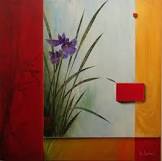

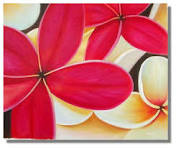
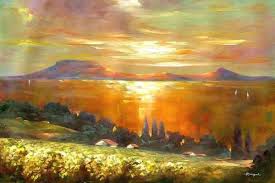
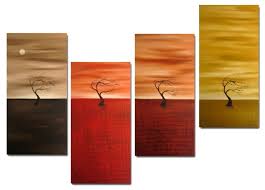
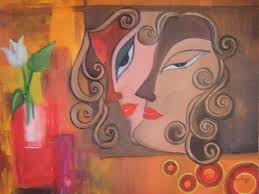

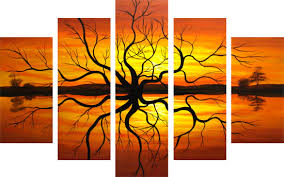
Canvas Paintings Biography
Clyfford Still (November 30, 1904 – June 23, 1980) was an American painter, and one of the leading figures of Abstract Expressionism.
Contents [hide]
1 Biography
2 The paintings
3 Education
4 Exhibitions
5 Awards
6 The Clyfford Still Museum
7 Legacy
8 Quotes
8.1 From Still
8.2 From others
9 Notes
10 References
11 Further reading
12 External links
[edit]Biography
Clyfford Still was a leader in the first generation of Abstract Expressionists who developed a new, powerful approach to painting in the years immediately following World War II. Still's contemporaries included Philip Guston, Franz Kline, Willem de Kooning, Robert Motherwell, Barnett Newman, Jackson Pollock, and Mark Rothko. Though the styles and approaches of these artists varied considerably, Abstract Expressionism is marked by abstract forms, expressive brushwork, and monumental scale, all of which were used to convey universal themes about creation, life, struggle, and death ("the human condition"), themes that took on a considerable relevance during and after World War II. Described by many as the most anti-traditional of the Abstract Expressionists,[citation needed] Still is credited with laying the groundwork for the movement. Still's shift from representational painting to abstraction occurred between 1938 and 1942, earlier than his colleagues, who continued to paint in figurative-surrealist styles well into the 1940s.[citation needed]
Still was born in 1904 in Grandin, North Dakota and spent his childhood in Spokane, Washington and Bow Island in southern Alberta, Canada. Although Abstract Expressionism is identified as a New York movement, Still's formative works were created during various teaching posts on the West Coast, first at Washington State University (1935–41). His work of this period is marked by an expressive figurative style used in depictions of the people, buildings, tools and machinery characteristic of farm life. By the late 1930s, he began to simplify his forms as he moved from representational painting toward abstraction. In 1941 Still relocated to the San Francisco Bay area where, following work in various war industries, he became a highly influential professor at the California School of Fine Arts, now known as the San Francisco Art Institute. He taught there from 1946-1950 (with a break in the summer of 1948 when he returned to New York).[1] It was during this time when Still "broke through" to his mature style. Still also taught at Virginia Commonwealth University from 1943-45.
Still visited New York for extended stays in the late 1940s and became associated with two of the galleries that launched the new American art to the world — Peggy Guggenheim's The Art of This Century Gallery and the Betty Parsons gallery. Rothko introduced him to Peggy Guggenheim, who gave him a solo exhibition at her Art of This Century gallery in early 1946. Later that year, the artist returned to San Francisco, where he taught for the next four years at the California School of Fine Arts.[2] He lived in New York for most of the 1950s, the height of Abstract Expressionism, but also a time when he became increasingly critical of the art world. In the early 1950s, Still severed ties with commercial galleries and in 1961 moved to a farm near Westminster, Maryland, removing himself further from the art world. He remained in Maryland with his second wife, Patricia, until his death in 1980. Following his death, all works that had not entered the public domain were sealed off from both public and scholarly view, closing off access to one of the most significant American painters of the 20th century.
[edit]The paintings
Still was also considered one of the foremost Color Field painters - his non-figurative paintings are non-objective, and largely concerned with juxtaposing different colors and surfaces in a variety of formations. Unlike Mark Rothko or Barnett Newman who organized their colors in a relatively simple way (Rothko in the form of nebulous rectangles, Newman in thin lines on vast fields of color), Still's arrangements are less regular. His jagged flashes of color give the impression that one layer of color has been "torn" off the painting, revealing the colors underneath. Another point of departure with Newman and Rothko is the way the paint is laid on the canvas; while Rothko and Newman used fairly flat colors and relatively thin paint, Still uses a thick impasto, causing subtle variety and shades that shimmer across the painting surfaces. His large mature works recall natural forms and natural phenomena at its most intense and mysterious; ancient stalagmites, caverns, foliage, seen both in darkness and in light lend poetic richness and depth to his work. By 1947, he had begun working in the format that he would intensify and refine throughout the rest of his career — a large-scale color field applied with palette knives.[3] Among Still's well known paintings is 1957-D No. 1, 1957, (above), which is mainly black and yellow with patches of white and a small amount of red. These four colors, and variations on them (purples, dark blues) are predominant in his work, although there is a tendency for his paintings to use darker shades.
[edit]Education
Still graduated in 1933 from Spokane University in Washington. In 1935 he received a Master of Arts in Fine Arts degree from Washington State College (now Washington State University). In 1934 Still was invited to be a guest artist at the Yaddo artists community in Saratoga Springs, New York. Along with Worth Griffin, Still co-founded the Nespelem Art Colony in 1937 that produced hundreds of portraits and landscapes depicting Colville Indian Reservation Native American life over the course of four summers.
[edit]Exhibitions
In 1943, Still's first solo show took place at the San Francisco Museum of Art. The artist then declined all public exhibitions from 1952 to 1959.[4] A first comprehensive Still retrospective took place at the Albright-Knox Art Gallery, Buffalo, New York, in 1959. Later solo exhibitions of Still's paintings were presented by the Institute of Contemporary Art of the University of Pennsylvania in Philadelphia in 1963 and at the Marlborough-Gerson Gallery, New York, in 1969–70. Also in 1975, a permanent installation of a group of his works opened at the San Francisco Museum of Modern Art.[5] In 1979, New York's Metropolitan Museum of Art organized the largest survey of Still's art to date and the largest presentation afforded by this institution to the work of a living artist.
[edit]Awards
Still received the Award of Merit for Painting in 1972 from the American Academy of Arts and Letters, of which he became a member in 1978, and the Skowhegan Medal for Painting in 1975.[5]
[edit]The Clyfford Still Museum
Clyfford Still Museum
After Still's death in 1980, the Still collection of approximately 2,400 works was sealed off completely from public and scholarly access. Still specified in his will that his entire estate be given to an American city willing to establish "permanent quarters" dedicated to his work. In August 2004, the City of Denver, Colorado, announced it had been chosen by Still’s wife, Patricia Still, to receive the artworks contained within the Clyfford Still Estate. This highly sought-after body of work contains over 2,400 artworks (roughly 825 paintings on canvas and 1575 works on paper - drawings and limited-edition fine-art prints) representing all periods of the American artist's distinguished career and nearly 94% of his total output. The museum will also house the complete Still archives of sketchbooks, journals, notebooks, the artist’s library, and other archival materials. Much of the work has not been seen by the public for over twenty-five years. Allied Works Architecture, led by Brad Cloepfil, was selected to design the museum’s facilities. The museum is an independent nonprofit organization directed by Dean Sobel.[6] The museum opened to the public on November 18, 2011, displaying 116 artworks chronologically in nine galleries.[7][8]
In keeping with the artist's wishes, the museum will show only Still's work, will not loan or sell any of its collection, and will not have a restaurant or auditorium.[9] In March 2011, a Maryland court with jurisdiction over Patricia Still's estate ruled that four of Still's works could be sold before they officially become part of museum's collection.[9] In November 2011, Sotheby's in New York sold the four works; PH-351 (1940) for US$1.2M, 1947-Y-No. 2 (1947) for US$31.4M, 1949-A-No. 1 (1949) for US$61.7M and PH-1033 (1976) for US$19.6M.[10] The proceeds from the sales, US$114M, went to the Clyfford Still Museum "to support its endowment and collection-related expenses."[9][10] In the decade prior to the sale, only 11 of Still's works came up at auction.[10]
In December 2011, a visitor to the museum was accused of causing $10,000 worth of damage to Still's 1957-J no.2 oil painting.[11]
[edit]Legacy
During his lifetime, Still sold only about 150 paintings. Major holdings of Still's paintings can be seen at the Albright-Knox Art Gallery in Buffalo, New York that houses 33 paintings dated between 1937 and 1963; at the San Francisco Museum of Modern Art, at the Hirshhorn Museum and Sculpture Garden and at the Metropolitan Museum of Art in New York City. Each of these museums has a gallery dedicated solely to Still paintings. In addition, Still paintings are in the collections of many major museums. Because very few of his paintings were sold, they are highly sought after.[12] Before the record-setting 2011 auction, Christie's sold two: in 2005, a 1955 painting sold for $7.8m.[citation needed] In 2006, a 1947 canvas set a new record at $21.296m.[citation needed]
[edit]Quotes
[edit]From Still
"I never wanted color to be color. I never wanted texture to be texture, or images to become shapes. I wanted them all to fuse together into a living spirit."
"It's intolerable to be stopped by a frame's edge."[13]
"I am not interested in illustrating my time. A man's "time" limits him, it does not truly liberate him. Our age - it is one of science, of mechanism, of power and death. I see no point in adding to its mechanism of power and death. I see no point in adding to its mammoth arrogance the compliment of a graphic homage."[14]
"How can we live and die and never know the difference?"
[edit]From others
"Still makes the rest of us look academic."
Jackson Pollock[cite this quote]
"His show at (Peggy Guggenheim's The Art of This Century Gallery in 1946), of all those early shows [Pollock, Rothko, Motherwell], was the most original. A bolt out of the blue. Most of us were still working through images . . . Still had none."
Robert Motherwell[cite this quote]
"When I first saw a 1948 painting of Still’s . . . I was impressed as never before by how estranging and upsetting genuine originality in art can be."
Clement Greenberg, art critic; American-Type Painting', Partisan Review, 1955, p.58.
"A remarkable and ultimately highly influential maverick . . . an independent genius."
Sam Hunter, modern art historian;[cite this quote]
"It was in the mid-1940s that Still asserted himself as one of the most formally inventive artists of his generation."
John Golding, art historian; Paths to the Absolute, 2000, Princeton University Press
"With their crude palette-knifed and troweled surfaces, their immense space, their strong color, their relentless vertical and horizontal expansiveness, Still’s abstract works project a forcefulness perhaps unequaled in Abstract Expressionist painting."
Stephen Polcari, art historian; Abstract Expressionism and the Modern Experience, 1991, Cambridge University Press
"A singular talent whose dimension will not be fully known in his own lifetime."
Robert Hughes, former Time magazine art critic; Time Magazine, Prairie Coriolanus, Feb 9, 1976
[edit]Notes
^ Clyfford Still, San Francisco Museum of Modern Art, 1976, p.112
^ [1] Clyfford Still.net, retrieved April 30, 2009
^ Clyfford Still, 1948 (1948) Guggenheim Collection.
^ Clyfford Still Tate Collection.
^ a b Clyfford Still Guggenheim Collection.
^ "CLYFFORD STILL MUSEUM TO OPEN IN DENVER NOVEMBER 2011". The Clyfford Still Museum.
^ MacMillan, Kyle (26 October 2011). "Installation of more than 100 artworks begins at Clyfford Still Museum in Denver". The Denver Post.
^ MacMillan, Kyle (18 November 2011). "With wraps off the art at new Denver museum, how good is Clyfford Still?". The Denver Post.
^ a b c "Court Greenlights Clyfford Still Museum's Creative Maneuver to Sell Off Four Paintings". ARTINFO. 28 March 2011.
^ a b c Crow, Kelly (10 November 2011). "Sotheby's Sells Group of Clyfford Still Paintings for $114 Million". The Wall Street Journal.
^ Coffman, Keith (5 January 2012). "Colorado woman accused of damaging $30 million painting". Reuters.
^ Judd Tully (26 March 2012). "Life Lists: Inside The Clyfford Still Boom Market".
^ Clyfford Still, San Francisco Museum of Modern Art, 1976, p.123
^ Clyfford Still, San Francisco Museum of Modern Art, 1976, p.124
Canvas Paintings
Canvas Paintings

Canvas Paintings
Canvas Paintings
Canvas Paintings
Canvas Paintings
Canvas Paintings
Canvas Paintings
Canvas Paintings
Mixed Media Canvas Painting - Combining Art Inspiration
How To Paint A Canvas? Part One
No comments:
Post a Comment